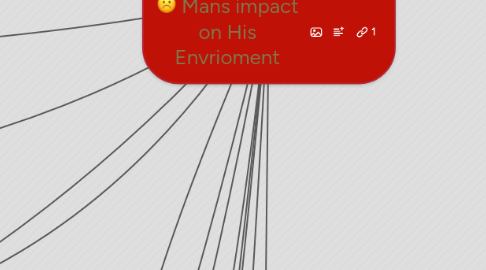
1. Bioaccumulation
2. Soil Erosion: Soil erodes when tree roots that hold the soil together disappear. Additionally, when the forest canopy that protects direct exposure to the force on rain and prevents topsoil from getting washed away also disappears, it also contributes to soil erosion.
3. Desertification: When forests are cleared, the canopy that once protected the soil disappears and hence causing sunlight to directly fall into the soil. This exposure leads to water to evaporate and leave the land to harden - becoming barren and unsuitable to grow crops.
4. Climate changes (Increase in Greenhouse Effect): The rainwater retained and absorbed by the roots is lost through transpiration. When water vapor condenses, it falls as rain. However, when trees are cleared, there will be less transpiration and less rainfall. Precipitation patterns are disrupted.
5. Flooding: The eroded soil will be deposited into rivers and may block the flow of water. There will be a rise in water level flowing inland and eventually causes flooding.
6. Example: DDT(dichlorodiphenyltrichloroethane) is a non-biodegradable insecticide. It cannot be broken down by organisms even bacteria. Due to its insolubility in water, it becomes stored in the soil and fatty issues of organisms. This is translated to bioaccumulation.
7. It refers to the addition of substances to the environment that results to damages and thus making it undesirable for life. Pollutants refer to substances that causes pollution
8. Water receives excess nutrients like phosphates and nitrates hence cause excessive growth of algae and water plants.
9. Loss in Biodiversity: Due to deforestation, animals and plants living in that specific area lose their habitat (the land does not produce the food they need) and could also result to their species being extinct.
10. Health of the people are affected as their source of food, the fish and even some plants, take in these inorganic waste and thus, when consumed by us, leads to deterioration in health or, the worst case scenario, death.
11. Deforestation refers to the clearing of forests to meet the increasing demands for land and resources like wood and food.....
12. Deforestation
12.1. What is Deforestation?
12.2. Effects of Deforestation
13. Pollution
13.1. What is pollution?
13.1.1. Inorganic wastes: Factories and industries situated along rivers and streams often dump poisonous inorganic wastes like mercury, lead, cadmium, arsenic and zinc.
13.1.1.1. Effects of Inorganic Wastes dumped in rivers
13.1.1.1.1. Poisonous metals discharged into water bodies will affect the water's pH. This imbalance in pH will cause for some organisms to lose its current habitat and thus resulting in imbalance in biodiversity.
13.1.2. Insecticides: Despite being useful to combat insects, it actually do more hard than good. Several disadvantages includes it being ineffective overtime as insects may become resistant overtime. Additionally, rather that only affecting insects, it may affect other organisms as well.
13.2. What causes pollution?
13.2.1. Eutrophication
14. Trawlers: It drags large fishing nets along the bottom of the seabed, trapping every marine life it comes across.
15. Uncontrolled Fishing Practices
15.1. How it harms...
15.1.1. Some species of fish are over-fished and its population drastically decreases. Modern commercial fishing methods allows this to happen as it does not distinguish the targeted and non-targeted catch.
15.1.2. Drift Nets: These nets are left to drift freely in seas and traps almost everything in their path
15.1.3. Modern fishing gears....
15.1.4. Cyanide fishing: When squirted into the water around coral reefs, reef fishes are often left stunned and makes thus not allowing them to swim properly. These fish are captured and sold as pets.
15.1.4.1. Dredges: It scrapes the seabed and often destroy habitats (i.e. coral reefs) and kills organisms living there.
